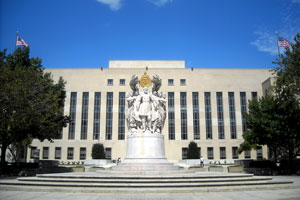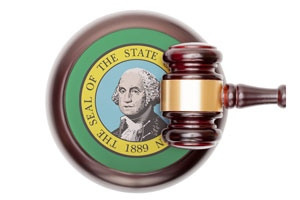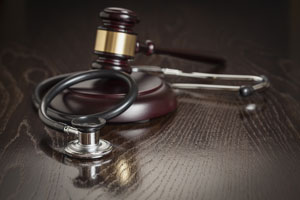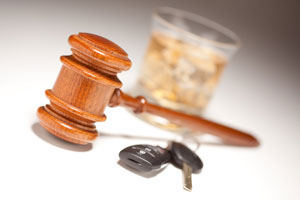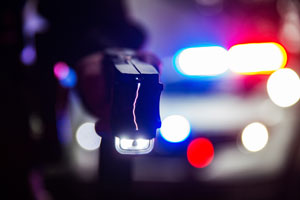The court that first adopted the Frye standard of expert witness admissibility has formally jettisoned that standard in favor of the Daubert standard. The D.C. Court of Appeals has now joined the federal courts and the majority of states in accepting Daubert as the standard under which the admissibility of expert testimony should be evaluated.
Evidence in the D.C. Court System
The District of Columbia Court of Appeals, like the District itself, is an oddity in American law. The District falls under federal jurisdiction but in most respects it operates as a state. An elected D.C. Council has the power to pass laws, but the laws are subject to the approval of Congress. The District’s trial courts, although operated by the federal government, are separate from the federal courts that decide federal cases. Trial court decisions in the District are appealed to the D.C. Court of Appeals, which describes itself as “the equivalent of a state supreme court.”
The District has not codified its own rules of evidence. Courts in the District are not bound by the Federal Rules of Evidence, although they often turn to the federal rules for guidance. In many instances, the D.C. Court of Appeals has adopted the federal rule, although sometimes in modified form to retain elements of common law rules it has historically followed.
The Competing Standards of Frye and Daubert
The Frye standard for the admission of expert testimony asks whether the expert’s opinion was based on principles that had been generally accepted within the relevant scientific community. The Frye standard was created by the D.C. Court of Appeals in Frye v. United States, a case it decided in 1923. Most states adopted the Frye standard in the years that followed.
State court reliance on the Frye standard changed dramatically after the United State Supreme Court decided Daubert v. Merrell Dow Pharmaceuticals. The Daubert decision interpreted Rule 702 of the Federal Rules of Evidence to require a broader test for expert evidence admissibility than Frye imposed. Under Daubert, judges ask whether the expert’s opinion is based on sufficient facts or data, whether the proposed evidence is based on a reliable methodology, and whether the expert has reliably applied the methodology to the facts.
Unlike the Frye standard, the Daubert standard does not require expert opinions to be based on theories that have gained widespread acceptance, provided that the expert applied a reasonable methodology in a reasonable way to facts that are sufficient to allow the expert to form an opinion. In that sense, Daubert broadened the universe of admissible expert evidence, although many of its proponents praise it for narrowing the range of “junk science” and other unreliable expert evidence that can be admitted in a trial.
Motorola v. Murray
All of the judges on the D.C. Court of Appeals participated in the court’s decision in Motorola v. Murray. The case involved a claim that long-term exposure to cell-phone radiation causes brain tumors. After weeks of pretrial hearings, the trial judge decided that most of the testimony offered by the plaintiffs’ experts would be admissible under the existing Frye standard, but most would be inadmissible under a Daubert standard.
According to the trial judge, the different results were attributable to court decisions that limited the Frye inquiry to whether an expert’s methodology was generally accepted and thus presumptively reliable. Unlike Daubert, the Frye standard did not allow courts to ask whether the expert applied the methodology in a reliable way. Under Frye, that question was for the jury to decide.
D.C. Abandons Frye Standard
In Motorola, the D.C. Court of Appeals recognized that the Daubert standard “in some respects relaxed traditional barriers to opinion testimony.” Opinions that are based on the reliable application of a reliable methodology to sufficient data are admissible even if the methodology has not been generally accepted. At the same time, the Daubert standard, unlike Frye, examines the expert’s application of the methodology. Under both Daubert and Frye, whether the expert’s conclusions are correct is for the jury to decide — but only if the judge allows the expert to testify.
The court recognized that Frye has been criticized for being “antiquated and out-of-step with modern science.” At the same time, the court noted that Daubert has been faulted “for producing inconsistent results, for making unqualified judges evaluate the work of scientists, and for invading the province of the jury.”
The court decided to adopt Daubert in both civil and criminal cases because it believed that Daubert, despite its flaws, will lead to “better decision-making by juries and trial judges alike.” Noting that the transition from Frye to Daubert will be difficult and that decisions in individual cases will probably be inconsistent, the court expressed confidence that trial courts would be guided by decisions of other jurisdictions that have adopted the widely-used Daubert standard. Finding definitive guidance might be challenging, however, given that appellate courts often disagree about the proper scope of a judge’s gatekeeping role under Daubert.
The court also cautioned that Daubert requires “a delicate touch” if judges are to avoid substituting their own judgment for conclusions that a jury should draw. The judge’s role as a gatekeeper is meant to prevent unsound evidence from reaching the jury. It is not meant to be a replacement for the adversary system of justice. The court noted that reliable applications of reliable methodologies can produce conflicting opinions, and emphasized that judges must take care not to evaluate the expert opinion itself. Only a jury can decide whether an opinion is credible.
Concurring Opinion Cites Doubtful Forensic Evidence
Judge Easterly’s notable concurring opinion urged judges applying Daubert to give special scrutiny to the opinions of forensic experts, even if the judges have grown used to admitting expert forensic opinions routinely under Frye. Judge Easterly called attention to expert methodologies that have been justly criticized as causing wrongful convictions. In particular, Judge Easterly called on trial court judges to pay special attention to the PCAST report and its recommendations for applying Daubert to dubious scientific methodologies that contribute to unreliable criminal convictions.
Photo Credit: Meade and Prettyman Courthouse, by AgnosticPreachersKid, CC BY-SA 3.0.


